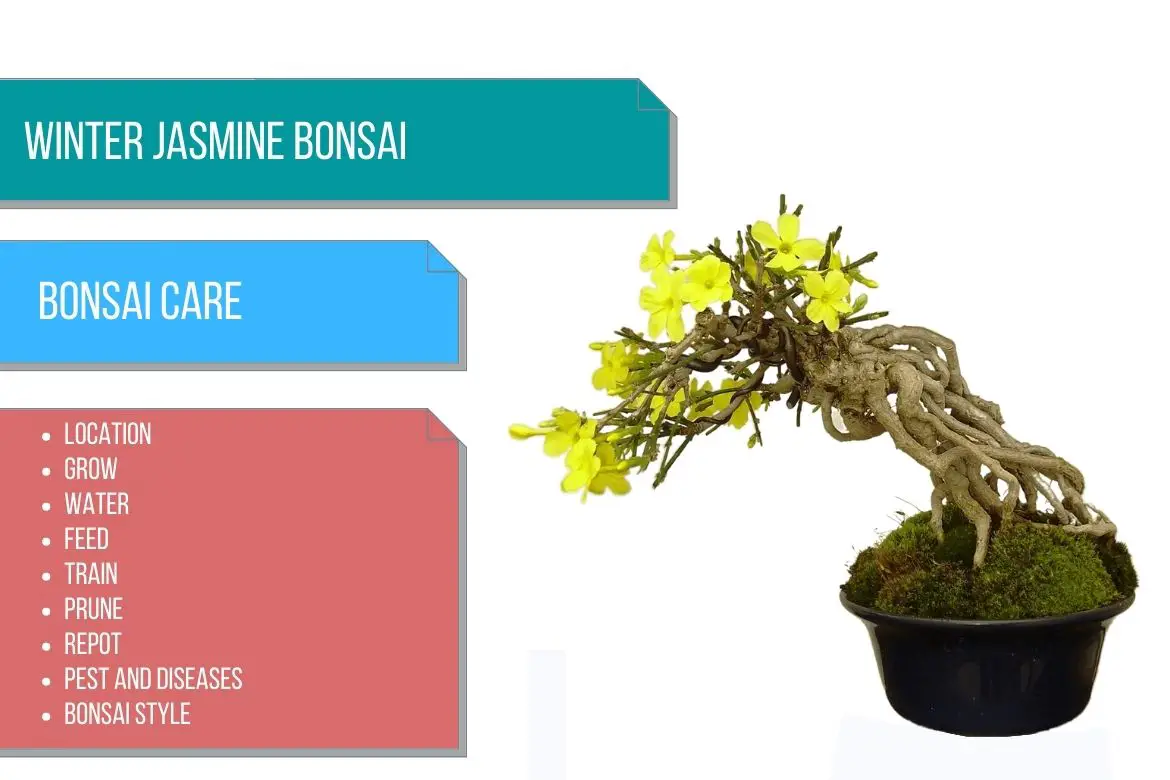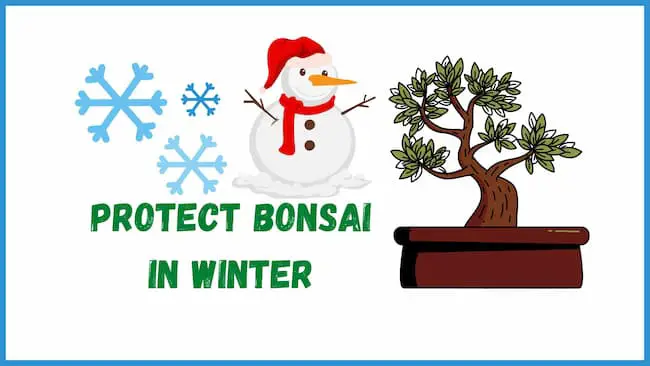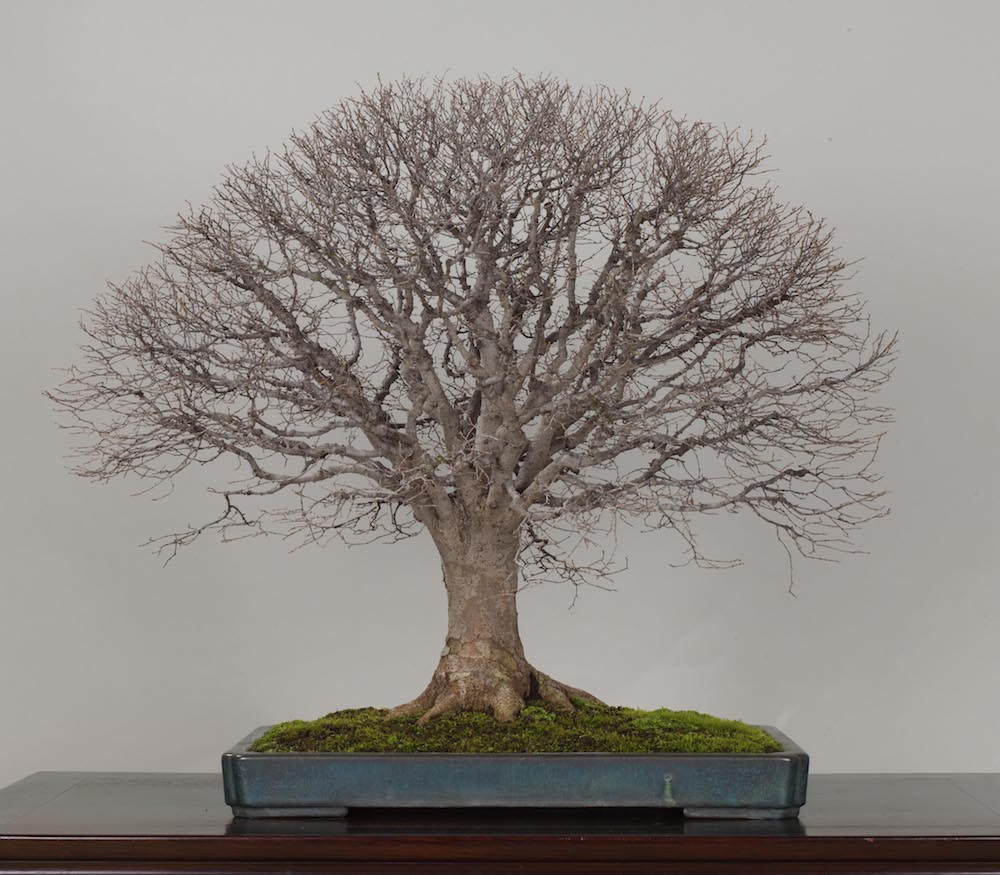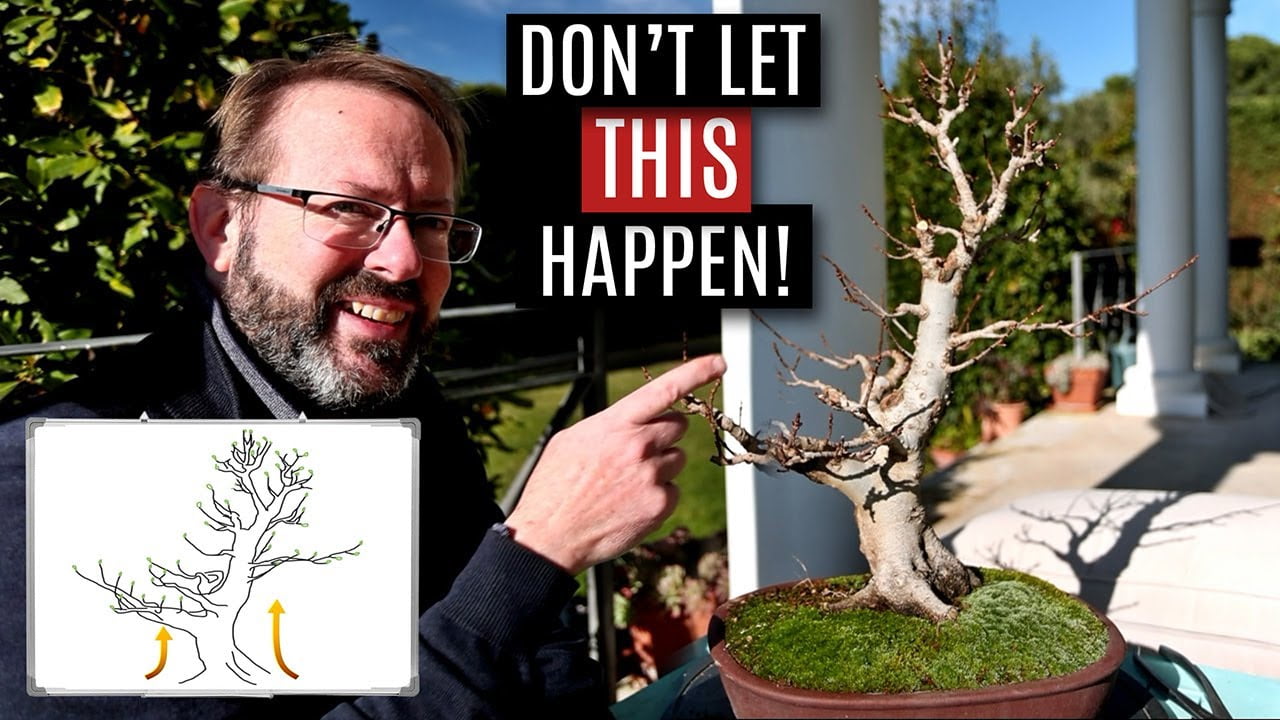Caring for your bonsai trees during winter is critical, experts share helpful tips and tricks in this comprehensive guide. From protecting your bonsai from cold winds to adjusting watering and light requirements, this article covers it all. Get expert advice on bonsai care and ensure your trees stay healthy and thriving during the colder season.
During the winter months, it’s important to give extra care and attention to your bonsai trees. This article, “Bonsai Care: Winter Tips and Tricks,” provides helpful information on how to protect your bonsai during the colder season.
From understanding whether bonsai trees can survive winter to knowing the proper care for indoor bonsai, this article covers it all. Additionally, it delves into topics such as feeding bonsai in winter, what to do with juniper bonsai, and how to ensure the survival of your bonsai during this time. With tips on storing dormant bonsai, light requirements, watering techniques, and protecting your bonsai from harsh winds, this article offers a comprehensive guide to keeping your bonsai healthy and thriving during the winter months.
So, if you’re a bonsai enthusiast looking for valuable information on winter care, this article is for you.

Bonsai Care in Winter
Throughout the year, bonsai trees require careful attention to ensure their health and vitality. As the colder months approach, it becomes imperative to adapt your bonsai care routine to the winter season. In this article, we will explore various aspects of winter bonsai care and provide you with tips and tricks to ensure your bonsai thrives during this period of rest and rejuvenation.
Fall and Winter Bonsai Tree Care – getting ready for a winter rest –
As the fall season sets in, it is essential to prepare your bonsai tree for its winter rest. One crucial step is to gradually reduce the frequency of watering. This will help your bonsai gradually transition into dormancy. Additionally, prune away any dead or diseased branches and remove any foliage that may hinder air circulation. By tidying up your bonsai, you create an environment that promotes healthy winter growth.
Storing Dormant Bonsai Trees
For many bonsai enthusiasts, storing dormant bonsai trees indoors or in protected outdoor locations is a common practice during winter. When deciding on storage options, it is crucial to consider the specific needs of your bonsai species. Some bonsai, like the hinoki bonsai or Japanese Cypress tree, may prefer a cool but frost-free environment, whereas others, such as deciduous trees, require a period of cold dormancy. Check the hardiness zone of your bonsai and provide suitable storage conditions accordingly.
Bonsai Light Requirements in Winter
During winter, sunlight availability may be limited. It is essential to evaluate the lighting needs of your bonsai and make necessary adjustments to ensure their well-being. While some outdoor bonsai plants can tolerate colder temperatures and reduced light, it is advisable to move them to a spot with maximum sunlight exposure whenever possible. For indoor bonsai, providing a supplemental light source, such as fluorescent grow lights, can help compensate for the decreased natural light.
Watering Bonsai in Winter
Proper watering is crucial for the health of bonsai trees during the winter months. As the growth rate slows down, you must adjust your watering routine accordingly. It is essential to strike a balance between preventing dehydration and avoiding excessive moisture. Before watering, check the moisture level of the soil by inserting your finger into it. If the soil feels dry about an inch deep, it is an indication that your bonsai needs watering. However, ensure that you do not overwater, as this can lead to root rot and other issues.
Protect Your Bonsai from Wind
Winter winds can be harsh and damaging to bonsai trees. It is important to take precautions to protect your bonsai from excessive exposure to wind. One way to achieve this is by creating windbreaks or barriers around your outdoor bonsai. These can be constructed using materials such as wooden boards or fabric. Additionally, you can adjust the placement of your bonsai to minimize exposure to strong winds. Furthermore, consider providing supplemental protection, such as wrapping delicate branches and foliage in burlap, to safeguard them from the drying effect of the cold air.
Can bonsai trees survive winter
Understanding the Hardiness Zone of your bonsai
When considering the survival of bonsai trees in winter, it is crucial to understand the hardiness zone of your specific bonsai species. Hardiness zones provide valuable information about the minimum temperatures a plant can withstand. By knowing the hardiness zone of your bonsai, you can make informed decisions about winter care strategies and appropriate storage options.
Choosing the right bonsai species for your climate
One of the fundamental factors in determining the survival of bonsai trees in winter is choosing a species that is well-suited to your climate. Some bonsai species, like the hinoki bonsai or the Japanese cypress tree, are more tolerant of colder temperatures and can withstand freezing conditions. On the other hand, some species may require additional protection or even need to be brought indoors during winter. Researching and selecting bonsai species that are compatible with your climate will significantly increase the chances of winter survival.
Providing winter protection for sensitive bonsai species
Certain bonsai species are more sensitive to cold temperatures and require extra protection during winter. For these species, it is crucial to provide insulation to shield them from freezing temperatures. This can be achieved by wrapping the pots with insulating materials or using special bonsai bags designed for winter protection. Additionally, placing the bonsai in a sheltered spot, such as against a south-facing wall, can provide extra warmth and protection.
Taking precautions to prevent freezing
Freezing temperatures can be detrimental to the health of your bonsai trees. To prevent freezing, it is essential to monitor weather forecasts and take appropriate precautions when necessary. For outdoor bonsai, consider covering the root zone with a layer of mulch to insulate the soil and protect the roots from freezing. For indoor bonsai, ensure that they are not placed near drafty windows or in areas where temperatures fluctuate dramatically.
Monitoring and adjusting winter care routines
Throughout the winter months, it is crucial to monitor the health and well-being of your bonsai trees regularly. Keep a close eye on changes in the moisture content of the soil, as well as any signs of stress or disease. Adjust your watering and care routine accordingly to provide the optimal conditions for your bonsai’s survival. Remember, proper care and attention are vital even during the winter season.
How do I care for my indoor bonsai in the winter
Adjusting watering frequency and technique
Indoor bonsai trees have different needs compared to their outdoor counterparts, especially during the winter season. One essential aspect of caring for indoor bonsai in winter is adjusting the watering frequency to account for the decreased light and cooler temperatures. Since indoor environments tend to be drier, it is advisable to water indoor bonsai more sparingly. However, it is crucial to monitor the moisture level of the soil and ensure it does not dry out completely. Optimal watering techniques, such as using a watering can with a fine spout, can help prevent overwatering and ensure even distribution.
Maintaining appropriate humidity levels
Indoor environments tend to have lower humidity levels during winter, which can negatively impact the health of your indoor bonsai. To counteract this, consider employing strategies to maintain proper humidity levels around your bonsai. One effective method is placing a humidity tray filled with water and pebbles beneath the bonsai. As the water evaporates, it increases the humidity around the tree. Alternatively, you can use a humidifier in the room or mist the foliage lightly to provide some moisture.
Providing sufficient light
Indoor bonsai trees heavily rely on artificial light sources during the winter months when natural light is limited. Position your indoor bonsai trees near windows to maximize the available sunlight. Supplemental grow lights, such as fluorescent or LED lights, can also be used to provide the necessary light intensity and duration. Ensure that the lights are placed at the appropriate distances and heights to mimic natural sunlight as much as possible.
Protecting indoor bonsai from drafts and temperature fluctuations
Indoor environments can be prone to temperature fluctuations and drafts, which can be detrimental to the health of your bonsai trees. To protect your indoor bonsai, avoid placing them near drafty windows, vents, or areas with fluctuating temperatures. If necessary, use curtains or blinds to shield your bonsai from cold drafts. Maintaining a consistent temperature and protecting your bonsai from sudden temperature changes will help ensure its well-being during the winter months.
Recognizing signs of stress and adjusting care
Even with the best intentions, indoor bonsai trees can still experience stress during the winter months. It is crucial to regularly inspect your indoor bonsai for any signs of stress, such as wilting, yellowing foliage, or pests. Adjust your care routine accordingly, providing extra attention to watering, humidity levels, and light exposure. Taking prompt action when you notice any signs of stress will help prevent further complications and ensure your indoor bonsai’s survival.
Should I Feed My bonsai in winter
Understanding the dormancy period of bonsai
During the winter months, most bonsai trees enter a period of dormancy, slowing down their physiological processes. This dormancy period is essential for their overall health and prepares them for new growth in the spring. Understanding the dormancy period and its significance will guide you in deciding whether or not to fertilize your bonsai during winter.
Reducing or ceasing fertilization during winter
In general, it is recommended to reduce or cease fertilization during the winter months when bonsai trees are dormant. Since their growth rate is minimal, fertilizing can lead to an accumulation of salts in the soil, which can be harmful to the roots. However, different bonsai species may have specific fertilization requirements, so it is crucial to research and understand the needs of your specific bonsai tree.
Applying winter-specific bonsai food if necessary
While most bonsai trees do not require regular fertilization during winter, there are some exceptions. Some specialized winter-specific bonsai food options are available in the market that provide the necessary nutrients in a balanced ratio for your bonsai’s winter needs. If you choose to use such products, carefully follow the instructions provided and use them sparingly, ensuring you do not overfertilize your bonsai.
Monitoring the health and growth of your bonsai
Even during the dormant period, it is vital to monitor the health and growth of your bonsai trees. Regularly inspect your bonsai for any signs of nutritional deficiencies, such as yellowing leaves or stunted growth. If you observe any issues, consult a bonsai expert or horticulturist for guidance on the appropriate course of action. Monitoring the overall health of your bonsai will help you determine the best approach to its care during the winter season.

What do you do with juniper bonsai in winter
Preparing juniper bonsai for winter dormancy
The juniper bonsai, a popular choice amongst bonsai enthusiasts, has specific requirements during the winter months. To prepare your juniper bonsai for winter dormancy, you need to ensure it receives adequate sunlight and moisture leading up to the onset of winter. Additionally, it is advisable to reduce fertilization in the weeks preceding winter to allow the tree to gradually slow down its growth.
Pruning and wiring before winter
Before winter sets in, it is advantageous to perform necessary pruning and wiring on your juniper bonsai. Pruning helps remove any dead or unwanted branches and improves the overall shape and structure of the tree. Wiring can be done to guide branches and help achieve the desired aesthetic appeal. Performing these tasks before winter allows the tree to focus its energy on healing and preparing for the dormant phase.
Providing protection from extreme cold and wind
Extreme cold temperatures and strong winter winds can be detrimental to the health of juniper bonsai. Protecting your juniper bonsai from these harsh winter conditions is crucial for its survival. Utilize protective measures like mulching the soil around the roots, covering the bonsai with burlap or frost cloth, or relocating it to a sheltered spot to shield it from harsh weather elements.
Monitoring and adjusting care based on juniper’s specific needs
Juniper bonsai have specific care requirements that need to be considered during the winter months. Regularly monitor the moisture levels of the soil and adjust watering frequency accordingly. Junipers prefer slightly drier conditions during dormancy but should not be allowed to dry out completely. Additionally, keep an eye out for any signs of pest infestation or disease and take appropriate action to address them promptly.
What should I do with my bonsai in the winter
Understanding the specific needs of your bonsai species
Each bonsai species has distinct requirements, and understanding these needs is crucial when caring for your bonsai during winter. Research and educate yourself about the specific needs of your bonsai species. Factors such as hardiness zone, sunlight requirements, and susceptibility to cold or freezing temperatures should all be taken into consideration.
Adjusting watering and fertilizing routines
The winter season calls for adjustments to your bonsai’s watering and fertilizing routines. As the growth rate slows down, it is essential to reduce the frequency of watering. However, it is equally important to ensure that your bonsai does not suffer from dehydration. Adjust the watering schedule based on the moisture level of the soil and the unique requirements of your bonsai species. Similarly, modify fertilization practices, reducing or ceasing fertilization during the dormant phase.
Monitoring and adjusting light exposure
Winter months often mean reduced natural light, which can impact the health of bonsai trees. Monitor the amount of sunlight your bonsai receives and make necessary adjustments to optimize its exposure. Move outdoor bonsai to areas that receive the most sunlight. For indoor bonsai, consider supplemental lighting to compensate for the reduced daylight hours. This close monitoring and timely adjustments will help your bonsai thrive during winter.
Protecting outdoor bonsai from harsh winter conditions
Outdoor bonsai trees face the brunt of winter weather, including extreme temperatures and inclement conditions. To protect your outdoor bonsai, consider using protective measures such as windbreaks, coverings, or relocating them to more sheltered areas. Mulch the soil to insulate the roots and regulate temperature fluctuations. Providing this extra layer of care will safeguard your outdoor bonsai from the harsh winter elements.
Creating a winter care schedule
Developing a winter care schedule for your bonsai will help you stay organized and ensure that all necessary tasks are performed regularly. This schedule should include tasks such as watering, inspecting for pest infestations or disease, adjusting light exposure, and providing protection from harsh weather conditions. By following a schedule, you can ensure that your bonsai receives the care it needs throughout the winter season.

Can bonsai trees grow in the winter
Understanding the growth patterns of bonsai in winter
Contrary to popular belief, bonsai trees can experience growth during the winter months, albeit at a slower pace. During this period, most bonsai trees undergo a period of dormancy, during which they conserve energy and focus on root development. It is essential to understand these growth patterns to provide optimal conditions for your bonsai’s winter growth.
Recognizing dormant versus active growth
Winter growth in bonsai is often characterized by less noticeable changes, which can make it difficult to distinguish between dormant and active growth. However, subtle signs such as the emergence of new buds or slight increases in branch thickness can indicate active growth. Conversely, complete lack of new growth or minimal changes might suggest that the bonsai is in a dormant state. Recognizing these differences will allow you to adjust your care routine accordingly.
Providing optimal conditions for winter growth
To support winter growth in bonsai, it is crucial to provide optimal growing conditions. Ensuring sufficient light exposure, moderating temperature fluctuations, and providing appropriate humidity levels are key factors to consider. Regularly monitoring and adjusting these conditions will help promote healthy growth and ensure your bonsai thrives throughout the winter season.
Choosing appropriate winter-friendly bonsai species
Some bonsai species are more conducive to winter growth than others. When selecting bonsai species for winter growth, consider those known for their ability to withstand colder temperatures and adapt to the winter season. Robust species like the juniper bonsai or the false cypress are popular choices for winter growth due to their hardiness and resilience. Researching and choosing appropriate bonsai species will increase the likelihood of successful winter growth.
Can bonsai trees stay outside in winter
Factors to consider when keeping bonsai outside in winter
Many bonsai trees can withstand winter temperatures and remain outdoors throughout the season. However, several factors need to be considered before leaving your bonsai outside during winter. These include the hardiness of the bonsai species, the local climate, and the specific care requirements of the tree.
Choosing hardy bonsai species for outdoor winter display
When planning to keep bonsai trees outdoors during winter, it is essential to choose species that are hardy and can tolerate freezing temperatures. Hardy bonsai species, such as the false cypress or certain types of juniper bonsai, are better suited for outdoor winter display. Research and select bonsai species that are compatible with your climate to ensure their survival.
Providing appropriate winter protection
While hardy bonsai species can tolerate winter conditions, it is still crucial to provide them with adequate protection. This includes sheltering them from strong winds, covering the root zone with mulch to insulate the soil, and using protective materials like burlap or frost cloth to shield the bonsai from extreme cold. Providing the right level of protection will help your outdoor bonsai thrive throughout the winter.
Monitoring and adjusting care based on local weather conditions
Local weather conditions play a significant role in the care of outdoor bonsai during winter. Monitor the weather forecasts regularly and make necessary adjustments to your care routine accordingly. For example, if a sudden cold snap or heavy snowfall is expected, it may be necessary to provide additional protection or temporarily relocate your bonsai to a more sheltered location. By staying informed and proactive, you can ensure the well-being of your outdoor bonsai throughout the winter season.

What do I do with my bonsai in the winter
Developing a winter care routine for your bonsai
To provide the best possible care for your bonsai during winter, it is essential to establish a winter care routine. This routine should encompass all the necessary tasks, including watering, adjusting light exposure, monitoring temperature fluctuations, and protecting your bonsai from harsh conditions. By creating a structured care routine, you can ensure that your bonsai receives consistent and appropriate care throughout the winter season.
Creating a suitable winter storage location
For bonsai enthusiasts who prefer to store their trees indoors during winter, it is important to create a suitable storage location. Select a cool, dry area away from drafts and extreme temperature fluctuations. Ensure that the storage area receives some natural light, or provide a supplementary light source if necessary. A well-ventilated space that maintains stable conditions will help your bonsai thrive while in storage.
Adjusting watering and fertilizing schedules
Winter necessitates adjustments to watering and fertilizing schedules for the health of your bonsai. Reduce the frequency of watering to account for the slower growth rate and decrease in evaporation. Overwatering can lead to root rot and other issues. Adjust fertilization accordingly, reducing or ceasing fertilization during the dormant phase. It is crucial to monitor the moisture level of the soil and the health of your bonsai throughout the winter to ensure optimal care.
Monitoring and addressing winter-specific bonsai issues
Winter brings its own set of challenges for bonsai care, including issues such as pests, diseases, or the accumulation of salts in the soil. Regularly inspect your bonsai for any signs of stress, such as discoloration, wilting, or pest infestations. If necessary, take appropriate action to address these issues promptly. Proper monitoring and addressing of winter-specific bonsai issues will help ensure the long-term health and vitality of your tree.
Protect Your Bonsai from Wind
Identifying the potential dangers of wind for bonsai
Strong winds can pose a significant threat to the health and well-being of your bonsai. Wind can cause desiccation, branch breakage, and uprooting, among other issues. It is crucial to identify the potential dangers of wind and take appropriate measures to protect your bonsai.
Creating windbreaks or barriers for outdoor bonsai
One effective way to protect your outdoor bonsai from wind is by creating windbreaks or barriers. These physical structures can be constructed using materials such as wooden boards or fabric. Place them strategically around your bonsai to minimize the impact of wind. Windbreaks act as buffers, reducing the force of the wind and preventing direct exposure to your bonsai.
Adjusting bonsai placement to minimize wind exposure
Careful placement of your bonsai can significantly reduce its exposure to wind. Position your outdoor bonsai in areas that are naturally shielded, such as against a south-facing wall or near existing landscape features like trees or shrubs. By strategically placing your bonsai, you can create natural wind barriers that protect your tree.
Providing supplemental protection for delicate branches and foliage
Delicate branches and foliage are particularly vulnerable to wind damage. To provide extra protection, consider wrapping these vulnerable areas with burlap or frost cloth. This protective covering will shield your bonsai from the drying effect of the wind and provide an additional layer of insulation. By taking such measures, you can safeguard your bonsai from potential wind-related harm.
In conclusion, winter is a critical period for bonsai care, requiring adjustments to watering, fertilizing, and light exposure routines. Understanding the specific needs of your bonsai species, providing appropriate protection, and monitoring their health are key factors in ensuring their survival and growth during the winter season. By following the tips and tricks outlined in this article, you can keep your bonsai healthy and thriving throughout the winter.



